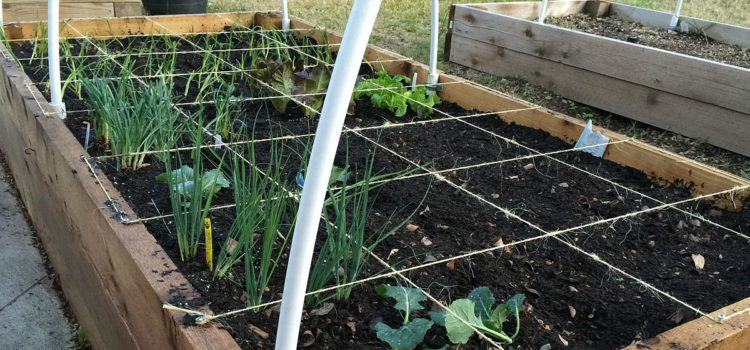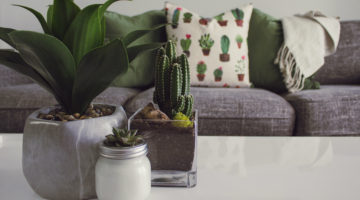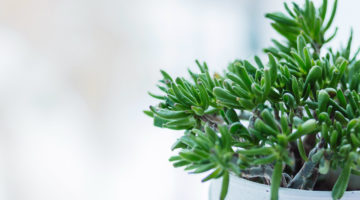A new gardening technique, known as square foot or square meter gardening, is gaining in popularity all around the world. With its use of intensive gardening techniques and shallow, raised beds, this is a method of gardening that aims to produce maximum crops from minimal yard-space; and at the same time as it conserves land, it also reduces water usage. In this article, we will explore all the ins and outs of this radical new gardening method. Read on to find out more.
What is a square foot garden?
Square foot gardening is basically a means of producing large harvests of fresh herbs and vegetables, even from a small yard. It was actually first developed by Mel Batholomew, an ex U.S military efficiency expert, who was convinced that there had to be a better means of increasing efficiency and overall yields in the typical backyard garden. His technique involved using a box built from 1.2 meter long boards (4×4 feet) – translating to 16 square feet of gardening space, that can be placed in any sunny place.
Building your square foot garden
Building such a garden is exceptionally easy. To make the garden edges, you can use bricks, timber or blocks of concrete (the borders of your garden don’t need to be more than about 20 centimeters in height). It is also simple to add a trellis to your square foot garden so that you can grow strings of peas, bean, cucumbers and other vine fruits and vegetables.
The depth of your box doesn’t need to be very deep, as square foot gardening relies on shallow, raised bed gardening techniques – almost all the roots of plants in this type of garden grow exclusively in the topmost 15 centimeters or six inches of soil. For this reason, so the soil mix you create should have good water- and nutrition-holding properties. Mel Bartholomew recommended at the ideal soil mix his own ‘Mel’s Mix’, a third compost, a third vermiculture, and a third peat moss. This will create a lightweight soil that allows maximal airflow, water retention properties and root penetration for your crops. This basic ‘recipe’ can be altered somewhat to suit local conditions and the materials available in your area. Moreover, you can add trace elements to provide extra nutrition for your plants.
Another essential aspect of your square foot garden is a grid which divides the box into squares. This enables you to space your plants appropriately for the amount of space available in the garden. Without a grid, you will naturally tend to space your plants further apart (as you would do in a normal garden). Using slats of timber, string line (of the sort plumbers use), or even some lengths of hose, you can make the grid a permanent component of your box. Or, you can design a ‘lift off’ grid that you can store away when not needed, using it only when starting your planters.
Where to place your square foot garden?
The answer is simple: any place that receives enough sun! In addition, you should place the garden close by to your house, so you can harvest your produce easily and take it back inside, weed your garden as you pop in and out of the back door – it will also enable you to more easily observe the growth of your plants, whether they’ve got any disease issues, whether they are being eaten by pests, and the like. If you want to place your square foot garden over an existing patch of lawn or weeds, simply cover the area with a few layers of newspaper and a sheet of cloth. You can also place your box on concrete or pavement – in fact any location will do, so long as you square foot garden won’t be hit by reflected heat during the summer.
Another advantage of square foot garden boxes is that they can easily be relocated as the seasons’ change – and if you move house.
Benefits of square foot gardening
Because of its compact size, all the plants in a square foot garden can easily be tended from the sides, so you will never have to step onto the soil – and in the process compact it. In addition, the more compact the garden, the fewer opportunity weeds have to take over your garden – and this is better news for your plants, and for you insofar as the garden requires less maintenance work. The fresh soil required by square foot garden beds is also healthier for your plants, and less prone to bear weeds.
Due to the smaller growing area involved with a square foot garden, it has fewer watering requirements; in addition, the special soil mixture you use has better water retention capacities.
Square foot gardens are more successful than conventional gardens – which is also good for those of you just getting into gardening, as you are less likely to get discouraged and give up in the early stages.
You can easily extend the size of your garden when you use square foot beds. Simply add more beds to your garden, or make the existing ones longer. In the latter case, make sure you keep one dimension four feet long so you can still easily access the plants in the middle of the garden without walking on the soil.
As mentioned, square foot gardens are portable, and thus you can move them around as the seasons change; you can also place them close to your house, and to water sources, thus making life more convenient for you when tending your garden.
What to plant in a square foot garden
Most common herbs and vegetables can be grown in a square foot garden – although it is probably better not to grow large growing plants this way. A good idea is to include some small flowering annual plants in your square foot garden box. They take up minimal space, look attractive, and also will draw pollinators and other useful insects to your garden. Here are the planting ratios you should follow for most standard backyard herbs and vegetables:
- Small plants: plant out 16 per square (5 cm apart)
- Medium plants: 9 per square (10 cm apart)
- Large plants: 4 per square (15 cm apart)
- Extra-large plants: try to give these a whole square to themselves
Use a greenhouse
You can easily create a greenhouse cover for your square foot garden, that protects your plants from bad weather and pests, and promotes more rapid growth.
Harvesting
Start harvesting leafy plants – like lettuce, spinach, silverbeet, etc – early. This way, you will enjoy early harvests, whilst your plants are still growing. Once you have picked all the produce from a square in your garden, simply cut down the plant to ground level (leaving the roots to decompose by themselves in the soil), and plant the next crop of your choice in the same space. You can add a sprinkling of fertilizer to the soil at this point – and every 2-4 weeks as the plant starts growing.




